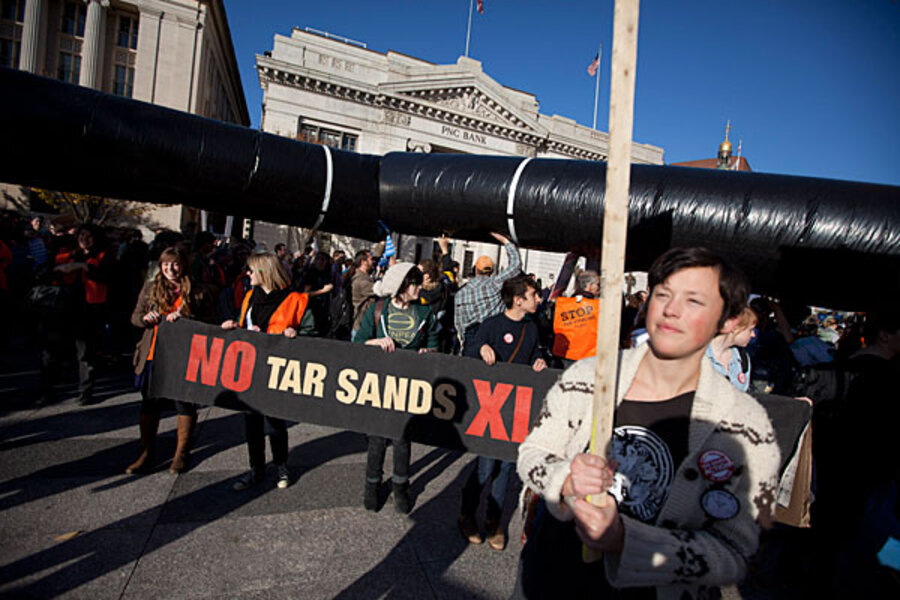The proposed $7 billion extension of an existing pipeline running from Alberta to refineries in Illinois would be, at 36 inches in diameter and 1,900 miles long, the largest single pipeline in North America.
Construction of the Keystone XL would actually consist of connecting two new sections to the existing Keystone pipeline traversing the Great Plains. If approved, it will carry “dil-bit,” or diluted bitumen, an acidic crude oil derived from tar sands mixed with a diluting agent that allows the resulting combination to flow more easily through the pipeline.
The dil-bit will flow from the Western Canadian Sedimentary Basin in Alberta, the largest and richest source of petroleum in North America, to refineries and distribution terminals in Nederland and Port Arthur Texas, two crude oil distribution hubs near the Gulf coast.
The pipeline will also tap American crude extracted from the Bakken oil shale formation in the Williston Basin in Montana and North Dakota. An uplink to the Keystone XL is planned for Baker, Mont., at the southern tip of the Bakken formation.





